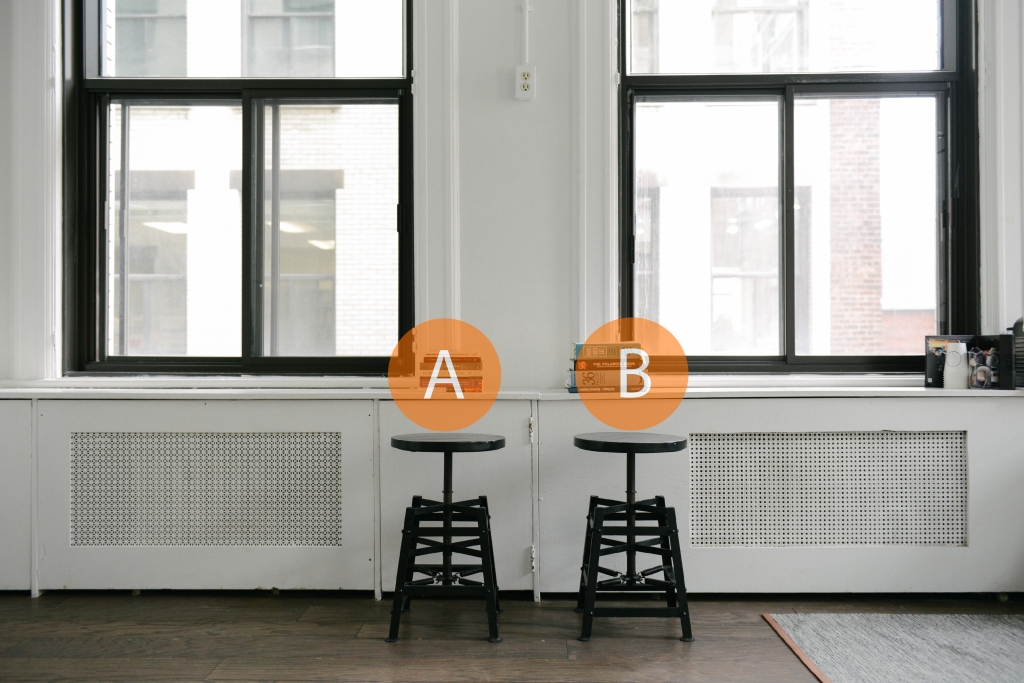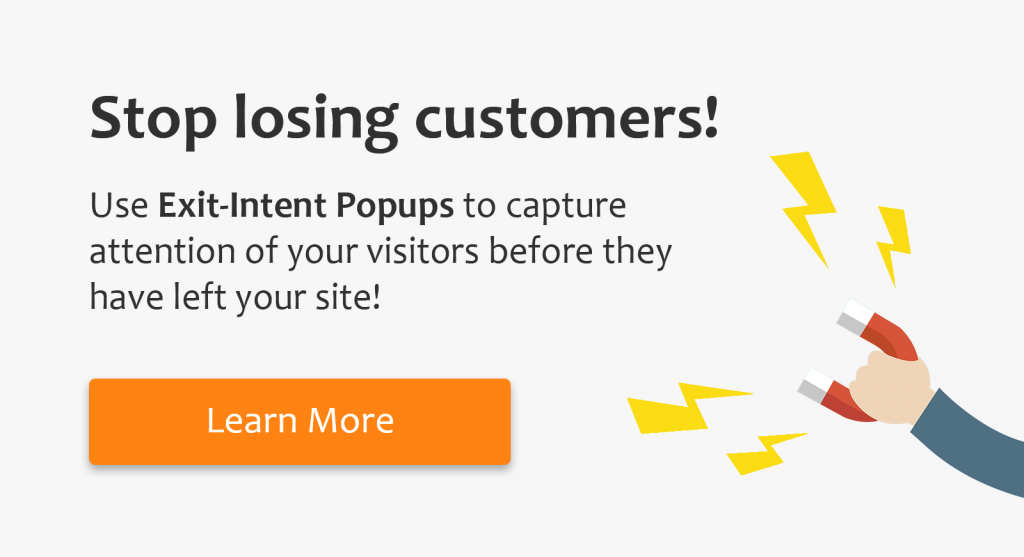
Let’s say you have started using exit intent overlays to increase the conversions on your website. After some time you realize that the overlays are not performing as good as you expected. Even though your banners are outstanding, CTR is low and you are not sure why.
Making an assumption that you know what works best for your audience based on their age, gender, education or income is not quite right. Therefore, forget everything you think you know about your customers and let them be the judges of your exit intent overlays.
What is A/B testing?
When it comes to exit intent overlays, A/B tests are conducted to determine which of the two banners drive more conversions. For this reason, website traffic is split evenly into two parts and each is presented with a different version of the overlay. Later, test results are analyzed to confirm or deny the initial hypothesis on the test, and changes are made to the banners or remarketing strategy accordingly.
Things to test
Headlines, CTA buttons, images and colors, everything that you might intend to put on your overlay can be tested. Some of the most common things to test on exit intent overlays include:
– Headlines
Using the same visuals, but presenting different headlines can help distinguishing which message is more appealing to your prospects and customers.

– Call to Action
Finding right words to encourage your website visitors to take an immediate action is not as easy as it might sound. That’s why testing what works better could be game-changing.

– Visuals
Colors, illustrations, images and buttons – it can either help to capture the attention of your visitors, or it can draw them back.

– Offers
Most of exit intent overlays are engaging with visitors by presenting them a special offer. Find out what type of offers convert more visitors.

– Required fields
At times exit intent pop-ups are used to generate leads. Depending on the industry your business is in, you might ask your visitors to input their contact information, in order to get in touch with them later.

– Platforms
Some exit overlays are performing better on the desktop than mobile and vice versa. Knowing what works better on different devices gives you a better chance to increase conversions.
Where to start?
Formulate hypothesis. Formulating a clear hypothesis for the test will allow you to measure the results accurately later on. For example: “Increasing the size of headline will attract visitor’s attention and increase conversions”.
Prepare. Create the banners, define test period time, get all the necessary tools ready to kick-start the test.
Test. Make each version of banners visible for assigned part of the traffic. And don’t forget to be present, closely monitor the process and take notes.
Analyze the results. Once the testing period is complete, compare the collected data to learn which version of the exit overlay performed better. Keep your goal in mind when assessing the results. However, don’t overlook the rest of the information, it can be useful for future development of your marketing strategies.
Draw conclusions. Based on test results, evaluate the initial hypothesis. Was it confirmed or denied? Perhaps the test results showed something unusual in user behavior? Take time to discuss what you have learned about your audience. Most importantly, discuss how this knowledge how can help to improve the effectiveness of your exit intent popups. And lastly, think how gathered information can help you improve the overall communication with prospects.
To conclude, well planned, conducted and assessed A/B test can make a great difference in the effectiveness of your exit intent overlays. Moreover, it can suggest changes to the overall marketing strategy of your company, since the test results are based on the feedback of your target audience.
